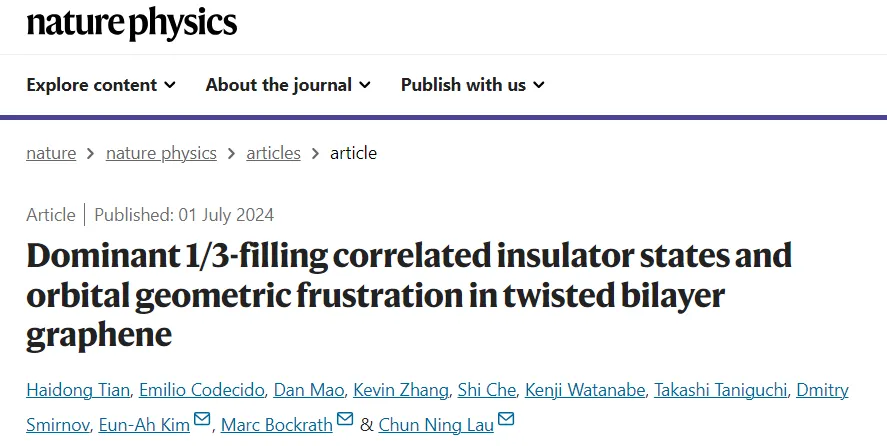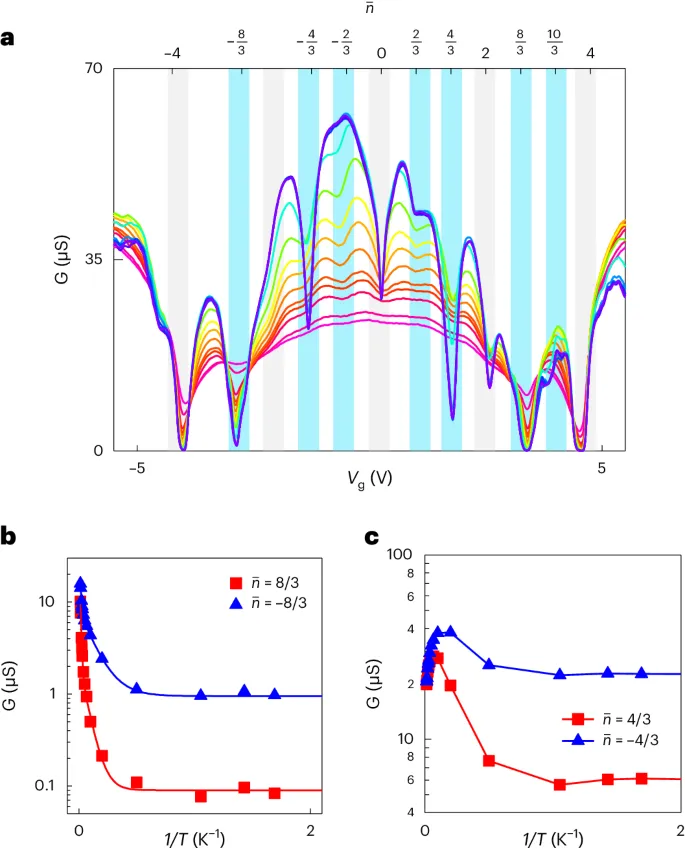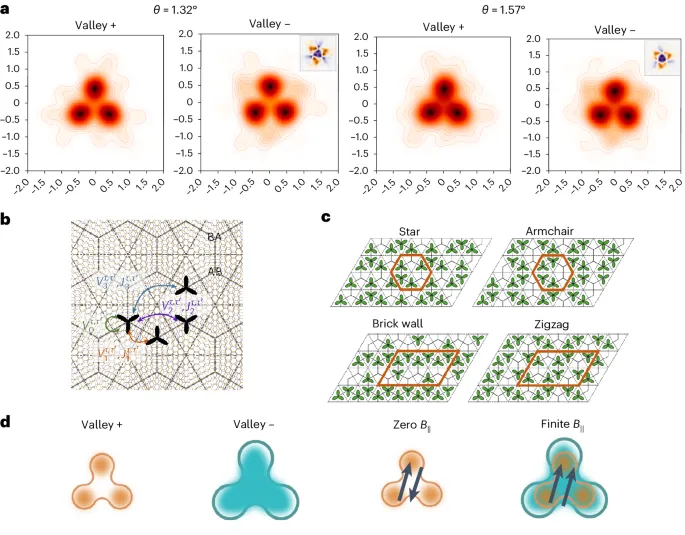Major Discovery: Large-Angle Twisted Bilayer Graphene
As the study of 2D materials and topological physics advances, twisted bilayer graphene (tBLG) and moiré transition metal dichalcogenides have captured significant attention. These materials exhibit complex electronic behavior and novel phase transitions under external magnetic fields. Key concepts such as geometric frustration and correlated insulating states provide insights into unconventional electron behavior within periodic superlattices and magnetic fields. However, understanding the impact of geometric frustration on charge carriers in twisted graphene systems—especially within triangular moiré lattices—remains incomplete.

Electrons in such intricate systems interact strongly with periodic structures and external conditions (e.g., magnetic fields), leading to diverse ground states. The competition between integer and fractional Chern states, alongside the balance between localization and interactions, poses theoretical challenges. A crucial question is how geometric frustration influences charge-ordered states and how these states can be observed and controlled in real-world devices.
In a recent breakthrough, researchers from The Ohio State University—Haidong Tian, Emilio Codecido, Dan Mao, Marc Bockrath, and Chun Ning Lau—published their findings in Nature Physics under the title “Dominant 1/3-Filling Correlated Insulator States and Orbital Geometric Frustration in Twisted Bilayer Graphene.” Their experiments focused on manipulating twist angles, doping, and magnetic field strengths to study electron localization, wavefunction reconstruction, and magnetic behavior, revealing new insights into these materials’ electronic properties.
Key Findings
- Robust Fractional Correlated Insulator State:
For the first time, strong zero-Chern-number fractional correlated insulating states were observed in twisted bilayer graphene at twist angles larger than the “magic angle.” These states dominate the integer-filled states at 1/3 filling and persist under both perpendicular and parallel magnetic fields. - Geometric Frustration Explained:
The study explains the origin of these fractional states using a Wannier-orbital-based geometric frustration model. It accounts for Coulomb interactions, site occupancy, valley polarization, and charge-ordering exchange interactions. In devices with smaller twist angles, the predicted brick-wall charge order state was experimentally confirmed at 1/3 filling. - Magnetic Ordering Transitions:
Parallel magnetic fields revealed distinct magnetic orders for specific 1/3-filling states, with ferromagnetic and antiferromagnetic orders observed under varying conditions. A transition toward spin alignment was detected at finite magnetic fields. Devices with larger twist angles and strong next-nearest-neighbor interactions exhibited a predicted threefold unit cell reconstruction, consistent with the armchair configuration.




Visual Data Highlights
- Figure 1: Temperature-dependent data for Device D1 at a twist angle of 1.32°.
- Figure 2: Real-space modeling of the system.
- Figures 3 & 4: Magnetic transport data for Devices D1 (at T = 300 mK) and D2 (at T = 1.5 K), respectively.
This research represents a major leap in understanding fractional correlated insulating states in twisted bilayer graphene beyond the magic angle. The experimental observations and theoretical analysis expand our knowledge of tBLG’s physical properties and pave the way for further exploration in quantum materials and quantum information technologies.
The study demonstrates the stability of 1/3-filled states, their magnetic ordering properties under external fields, and their threefold unit cell reconstructions—laying a solid foundation for future designs and controls of correlated insulators. The use of a Wannier-orbital-based model highlights the critical role of geometric structure in forming charge-ordered states.
These findings contribute to new material design concepts based on real-space models and offer crucial insights into the complex interactions in 2D systems like twisted graphene. Additionally, the potential applications for quantum information processing and advanced electronic devices make this research a promising direction for the future of quantum physics and material science.
Original paper: https://doi.org/10.1038/s41567-024-02546-5

